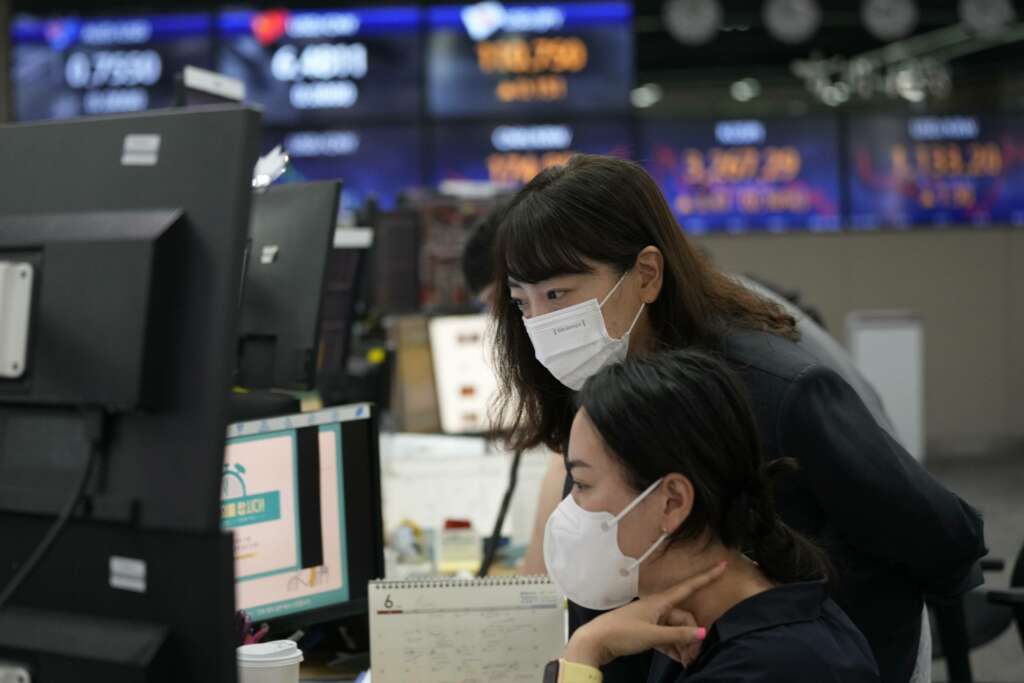
NEW YORK (AP) — A listless day on Wall Street ended with indexes mixed on Wednesday, as nervousness continues to wash out of the market following last week’s jolt by the Federal Reserve.
The S&P 500 slipped 4.60 points, or 0.1%, to 4,241.84 after earlier meandering between very modest gains and losses. It’s 0.3% below its record high set a week and a half ago.
The Dow Jones Industrial Average fell 71.34, or 0.2%, to 33,874.24, while the Nasdaq composite added to its record set a day before. It inched up by 18.46, or 0.1%, to 14,271.73.
The majority of stocks in the S&P 500 fell, but gains for financial companies and others that do best when the economy is healthy helped limit the losses.
Markets have calmed notably since the Federal Reserve surprised investors last week by saying it could start raising short-term interest rates by late 2023, earlier than expected.
The super-low rates the Fed has engineered to carry the economy through the pandemic have made investing easy for more than a year. They’ve propped up prices across markets, and any change would be a big deal. That’s why the Fed’s announcement triggered an immediate drop for stocks and rise in Treasury yields.
But since then, investors have focused more on how it may be still be years before the first rate hike hits, particularly as Fed officials continue to say they see the high inflation sweeping the economy being only a temporary problem.
Before the Fed raises rates for the first time since 2018, it will likely first have to check off several items, investment giant Capital Group said in a recent report.
First, the Fed will announce that it will reduce the bond purchases it’s making to keep longer-term interest rates low. Then it will actually begin tapering, before ending tapering and then signaling that a rate hike is coming.
“That schedule will take time, and Fed officials have made it clear that they will remain patient,” said Capital Group, which runs American Funds, in its midyear outlook.
In the meantime, the economy continues to roar higher, and corporate profits are soaring.
One measure of nervousness among stock investors in the market, known as the VIX, fell about 2%. Earlier in the day, it came close to its lowest level since the pandemic sell-off began in February 2020.
Of course, if the Fed is wrong and higher inflation is longer lasting, the central bank will then have to get more aggressive about raising rates.
The latest data on inflation will come on Friday with the release of the Federal Reserve’s preferred gauge. It will cover May, which the consumer price index has already said saw year-over-year inflation of 5%.
Bond yields were holding relatively steady following a mixed set of economic data. The yield on the 10-year Treasury inched up to 1.48% from 1.47% late Tuesday. The two-year yield held at 0.25%.
Preliminary readings on the economy in June from IHS Markit showed manufacturing is growing at a stronger pace than economists expected, but growth for services industries fell short of forecasts.
Sales of new homes in May also failed to meet economists’ forecasts. It was the second straight monthly decline, as surging prices for homes slow activity. Besides a shortage of homes on the market, inflation has also been driving home prices higher because of increased costs for lumber and other building materials.
European markets were mostly lower. The DAX in Germany lost 1.2%, and the CAC 40 in France fell 0.9%. The FTSE 100 in London fell 0.2%.
In Asia, Japan’s Nikkei 225 was nearly unchanged while other markets were stronger. Hong Kong’s Hang Seng rose 1.8%, and stocks in Seoul gained 0.4%.
Copyright © 2021 . All rights reserved. This website is not intended for users located within the European Economic Area.
